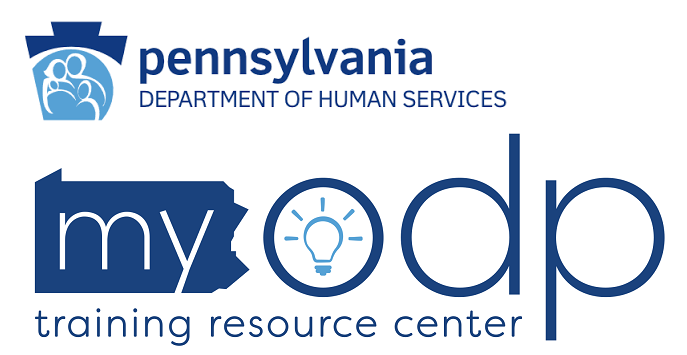Positive Approaches Journal, Volume 12, Issue 3
Corr | 54-60

Volume 12 ► Issue 3 ► November 2023
More Health Care System Interventions Needed to Curb Veteran Suicide Rate
Universal screening can help more effectively determine risk
Allison Corr
Suicide is a major public health challenge that disproportionately affects veterans—both men and women—in the U.S. In 2020, the rate among this group was 57% higher than their non-veteran counterparts, according to the 2022 National Veteran Suicide Prevention Annual Report1 by the U.S. Department of Veterans Affairs (VA). Pennsylvania has steep disparities as well: The rate of veteran deaths by suicide was 86% higher than the overall state suicide rate. The VA report, published in September 2022, also discussed the federal government’s comprehensive public health strategy2 to improve suicide prevention interventions for veterans. Included in these efforts is the practice of universal suicide risk screening to help stop these preventable deaths.
Research suggests that a multitude of factors contribute to the risk of suicide among veterans.3 Military service can lead to post-traumatic stress disorder, depression, substance use disorders, and chronic pain and other serious health conditions. To make matters worse, too often veterans experience systemic barriers to accessing critical health care. The VA states that preventing suicides is its top clinical priority4, and has made resources available, including evidence-based therapies, mobile apps to promote mental health, and special training for anyone who encounters a veteran in crisis. Yet administrative and bureaucratic challenges, including availability of providers5, long wait times, and financial qualifications6, are ongoing obstacles in some places, and can discourage veterans from getting the care they need.
However, many veterans who die by suicide utilized health services, including through the Veterans Health Administration (VHA), in the weeks or months leading up to their deaths. The VA reported that in 2020, 40% of veterans who died by suicide had a VHA encounter in the year of their death or year prior. Previous research found that 56% of male VHA patients with substance use disorders7 who died by suicide had a VHA encounter in the month before death, and 25% in the week prior. These health care visits are critical opportunities to identify patients experiencing suicidality—which includes suicidal thoughts, plans, deliberate self-harm, and suicide attempts—and connect them to evidence-based treatment.
Universal screening
In 2018, the VA published a 10-year broad public health strategy8 on preventing suicide among veterans. This comprehensive, interagency approach includes implementing effective treatment and support services for veterans already identified as high risk. It also emphasizes the importance of strengthening clinical and community suicide prevention initiatives, including universal screening.
This screening practice means that all patients are briefly assessed for risk of suicide upon intake at a health care setting, regardless of whether they are exhibiting signs of suicidality. Research shows that universal screening is effective9 at identifying a greater number of people experiencing suicide risk compared with assessing only those seeking behavioral or mental health care. The results of a recent study looking at VHA data suggests that screening all veterans in these settings,10 not only veterans seeking mental health treatment, will help ensure individuals experiencing suicide risk receive appropriate care.
Patient data from hospitals and health systems outside of the VA show similar results. When looking at the general population, research reveals that about half of people who die by suicide see a health care professional10 in the month before their deaths. More than half of the people who die by suicide11 do not have a known mental health condition. However, including universal screening as part of comprehensive suicide care can help prevent suicides. A study of eight emergency departments showed that universal suicide risk screening helped12 identify twice as many people who were at risk for suicide compared with screening only patients presenting with psychiatric symptoms. Researchers have also found that universal screening followed by evidence-based interventions13 reduced total suicide attempts by 30% that year.
Despite some concerns from health care providers, talking about suicide does not increase risk14 of suicidal thoughts or behavior. Evidence indicates that suicide risk screening is not associated with increased suicidality;15 on the contrary, directly communicating with patients about suicide helps identify at-risk individuals and connect them to treatment. Incorporating universal screening is even feasible without disrupting workflow,16 with an initial screening taking less than a minute17 and covered by public and private insurance. All patients, veteran and civilian, can and should be asked a few simple questions to determine suicide risk so they have an opportunity to receive care.
Although there is no simple solution to the devastating problem of suicide among veterans, there are evidence-based preventive measures and interventions that can help save veterans’ lives. The place to start is expanded and improved suicide screening to ensure veterans receive the critical treatment and support services that they need.
Allison Corr works on The Pew Charitable Trusts’ suicide risk reduction project.
If you or someone you know needs help, please call or text the Suicide and Crisis Lifeline at 988 or visit 988lifeline.org and click on the chat button.
References
1. U.S. Department of Veterans Affairs, Office of Mental Health and Suicide Prevention Annual Report. (n.d.). 2022. Retrieved November 2023 from https://www.mentalhealth.va.gov/suicide_prevention/data.asp.
2. The White House, Reducing Military and Veteran Suicide: Advancing a Comprehensive, Cross-sector, Evidence informed Public Health Strategy. (n.d.). 2021. Retrieved November 2023 from https://www.whitehouse.gov/wp-content/uploads/2021/11/Military-and-Veteran-Suicide-Prevention-Strategy.pdf.
3. Yedlinsky, N.T., Neff, L.A., Jordan, K.M. Care of the Military Veteran: Selected Health Issues. American Family Physician. 2019; 100(9):544-551 https://www.aafp.org/pubs/afp/issues/2019/1101/p544.html.
4. U.S Department of Veterans Affairs. (2023). Suicide Prevention. Retrieved November 2023 from: https://www.mentalhealth.va.gov/suicide_prevention/.
5. RAND Corporation. Veterans' Barriers to Care. Retrieved November 2023 from: https://www.rand.org/health-care/projects/navigating-mental-health-care-for-veterans/barriers-to-care.html.
6. Cheney, A.M., Koenig, C.J., Miller, C.J. et al. Veteran-centered barriers to VA mental healthcare services use. BMC Health Services Research 2018; 18 (591). https://doi.org/10.1186/s12913-018-3346-9.
7. Ilgen M. A., Conner K.R., Roeder K. M., et al. American Journal of Public Health. 2012; 102: S88–S92. doi: 10.2105/AJPH.2011.300392
8. U.S. Department of veterans Affairs. National Strategy for Preventing Veteran Suicide. (n.d.). Retrieved November 2023 from:https://www.mentalhealth.va.gov/suicide_prevention/docs/Office-of-Mental-Health-and-Suicide-Prevention-National-Strategy-for-Preventing-Veterans-Suicide.pdf.
9. Mizzi A.K. Suicide Risk Screenings Can Save Lives. The Pew Charitable Trusts. 2022. Retrieved November 2023 from: https://www.pewtrusts.org/en/research-and-analysis/articles/2022/01/25/suicide-risk-screenings-can-save-lives.
10. Bahraini, N, Brenner, L.A., Barry, C., et al., Assessment of Rates of Suicide Risk Screening and Prevalence of Positive Screening Results Among US Veterans After Implementation of the Veterans Affairs Suicide Risk Identification Strategy. JAMA Network Open. Doi: https://doi.org/10.1007/s11606-014-2767-3.
11. Stone, D.M., Simon, T.R.S., Fowler, K.A., et. al., Vital Signs: Trends in State Suicide Rates — United States, 1999–2016 and Circumstances Contributing to Suicide — 27 States, 2015. CDC Morbidity and Mortality Weekly Report (MMWR). 2018. 67(22);617–624. Doi: https://dx.doi.org/10.15585/mmwr.mm6722a1
12. Boudreaux, E.D., Camargo, C.A., Arias, S.A., et. al., Improving Suicide Risk Screening and Detection in the Emergency Department. American Journal of Preventative Medicine. 2015. Doi: https://doi.org/10.1016/j.amepre.2015.09.029.
13. Miller, I.W., Camargo, C.A., Arias, S.A., Suicide Prevention in an Emergency Department Population. The ED-SAFE Study. JAMA Network. 2017; 74(6):563-570. doi:10.1001/jamapsychiatry.2017.0678
14. Mathias, C.W., Furr, R.M., Sheftall, A.H., et.al., What's the harm in asking about suicidal ideation? Suicide Life and Threatening Behavior. 2012; 42(3):341-51. doi: https://pubmed.ncbi.nlm.nih.gov/22548324/.
15. Dazzi, T., Gribble, S., Wessley, S., et. al., Does asking about suicide and related behaviours induce suicidal ideation? What is the evidence? Psychological Medicine. 2014; 44(16): 3361-3363. Doi: https://doi.org/10.1017/S0033291714001299.
16. The Pew Charitable Trusts. Universal Screening Can Help Identify People at Risk for Suicide. 2022. Retrieved November 2023 from: https://www.pewtrusts.org/en/research-and-analysis/articles/2022/01/25/universal-screening-can-help-identify-people-at-risk-for-suicide.
17. The Pew Charitable Trusts. A Few Simple Questions Can Help Prevent Suicide2022. Retrieved November 2023 from: https://www.pewtrusts.org/en/research-and-analysis/fact-sheets/2022/08/02/a-few-simple-questions-can-help-prevent-suicide.
Biography
Allison Corr is an officer with Pew’s suicide risk reduction project, working with hospitals and health systems to implement evidence-based suicide prevention interventions. Previously, Corr was an officer with Pew’s dental campaign, focusing on efforts to expand access to oral health care for underserved populations. Before joining Pew, she worked on a range of health care issues for the Energy and Commerce Committee of the U.S. House of Representatives. Corr holds a bachelor’s degree in psychology from the University of Virginia and master’s degrees in public health and social work from Columbia University.
Contact Information
Nicole
Silverman
Communications Officer
nsilverman@pewtrusts.org
202-540-6964




